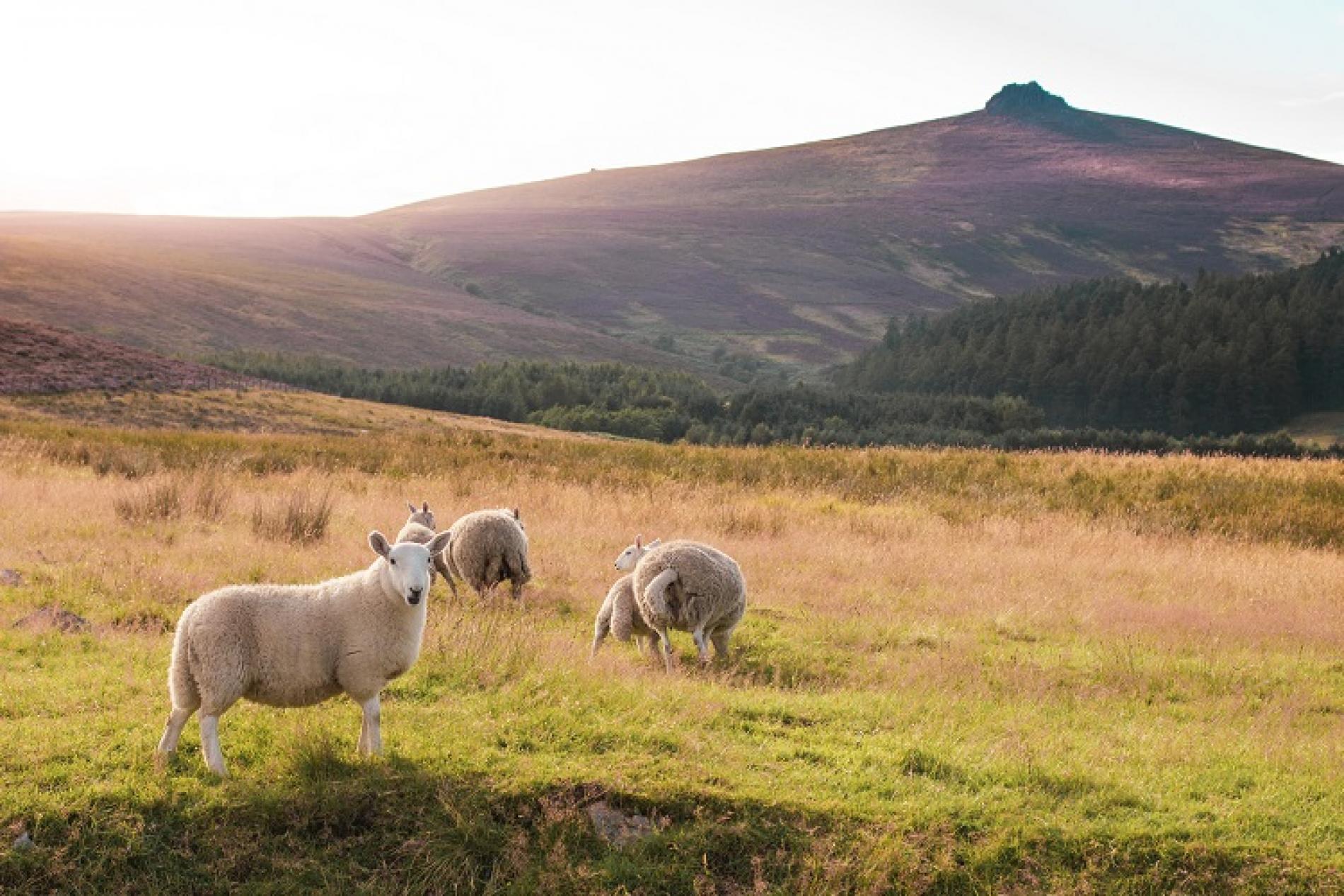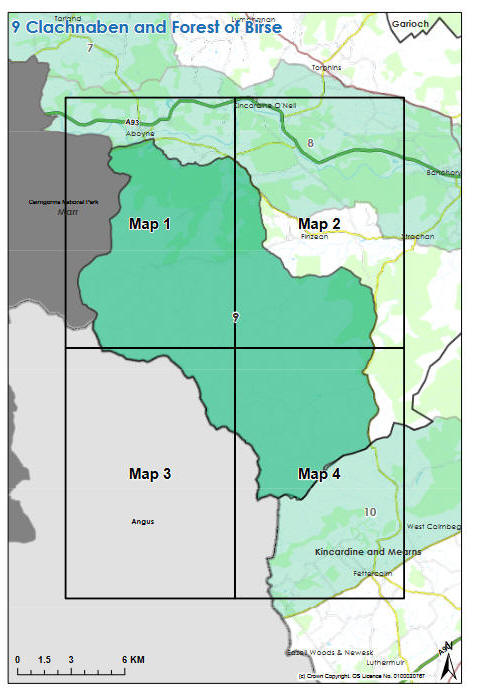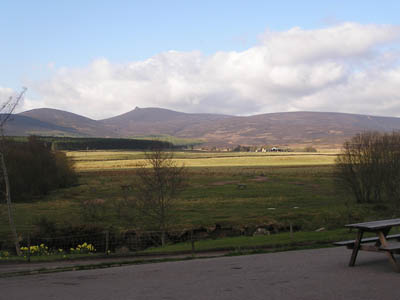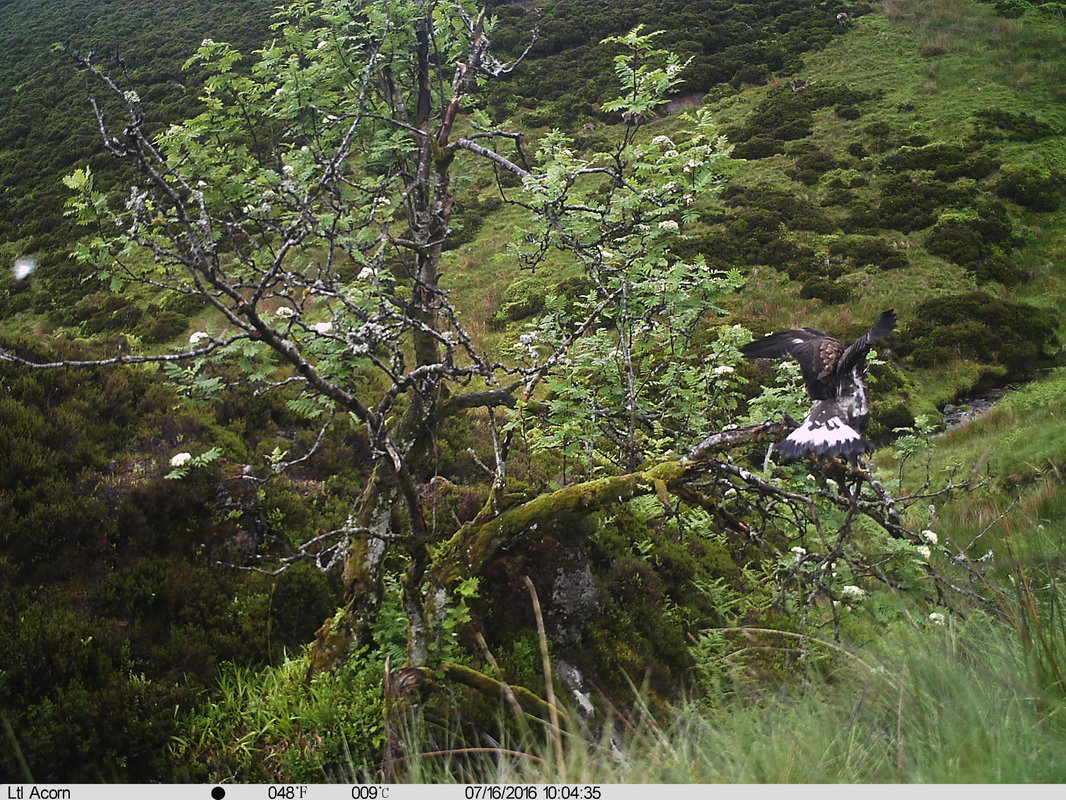History of Clachnaben

Clachnaben
Clachnaben
Clachnaben (archaically "Cloch-na'bain"; Scottish Gaelic: "Clach na Beinne" for stone of the ben), is one of the eastern Grampians in Strachan Parish, Aberdeenshire. It is crowned by a mass of bare granite, from which it is sometimes called the "White Stone Hill." It is located in Glendye, and its elevation rises to 589m (1932 feet).Clachnaben is a distinctive landmark viewable from much of the Lower Deeside, and beyond.
Clachnaben is the single most prominent feature in the barony of Strachan. It is said that on a clear day one can view north all the way to Peterhead, and south to the Lammermuirs in East Lothian [F.H. Groome, Ordnance Gazetteer of Scotland (1882-4)].
As discussed below, Clachnaben is not only part of Scotland's historic environment, but the site is part of the local community and Clan Strachan's tangible and intangible cultural heritage. Historic Environment Scotland's publication, Our Place In Time, page 2, it provides the following:
The historic environment could be said to be 'the cultural heritage of places', and is a combination of physical things (tangible) and those aspects we cannot see - stories, traditions, rituals, and concepts (intangible). It comprises a variety of objects, structures, landscapes and features.
Scotland's historic environment is intrinsic to our sense of place and strong cultural identity. It is diverse, but collectively it tells the story of our shared past. . It is important in its own terms, providing key evidence of the lives and creativity of our forebears. It also helps to create a sense of place, identity and physical and social wellbeing, and benefits the economy, civic participation, tourism and lifelong learning. It is dynamic and ever-changing and that dynamism lies at the heart of the need for sound principles of stewardship. For the people of Scotland to continue to gain real, and increasing, benefits from their historic environment, it needs to be understood, valued and championed.
The Aberdeenshire Council LDP includes Clachnaben in the 'Clachnaben and Forest of Birse' Special Landscape Area (see below), and the Feughside Conservation Area.

Clan Strachan's War Cry
Each clan has historically had a war cry that psychologically affected their foes and helped distinguish comrades on the battlefield. This war cry is often taken from the name of a prominent physical feature in the clan district. Clan Strachan's war cry is 'Clachnaben!'.
Maid of Strachan

Maid of Strachan
(viewed from the Feughside Guesthouse)
Local north-facing mountains of Mount Shade (Monadh Seid), Clachnaben, and the Hill of Edendocher form what locals refer to as the Maid (or Lady) of Strachan, which can be viewed from most of the Lower Deeside. These mountains appear as a young woman lying in repose.
The Devil's Bite & Other Folklore
First written in 1912, according to local folklore (as viewed on the route from the Dardanus Stone down to Finzean, from Ballogie) the devil took a bite out of the earth (an area locals refer to as 'the Devil's bite'). The devil disliked the taste so much that he spat out the stone, which now forms the tor of Clachnaben. [1] [2]
Other stories tell of giants hurling rocks at each other, and that the tor is a boulder hurled across the hills by Jock O' Bennachie at his rival Jock O' North who lived on the Tap O' North close to Rhynie. [1]
Another tradition embodied in a poem by the minister of Birse (near Aboyne) in the latter part of the eighteenth century, the stone originally lay "low in a plain" whence it was taken by the Devil to be hurled at his dame, who has since lain entombed beneath the tor. [2]
Mentioned In Literature & Song
According to an old-world couplet (dated 1732): [1]
"There are two landmarks off at sea,
Clochnabin and
Bennachie"
Clachnaben is also referred to in a story, "Mattie: A Stray", published in 1865 [2]
Nan Shepherd (11 February 1893 to 27 February 1981) was a Scottish Modernist writer and poet, best known for her seminal mountain memoir, The Living Mountain, based on experiences of hill walking in the Cairngorms. In this book, she prominently mentions Clachnaben.
Clachnaben is mentioned in the song, Cairn O'Mount. Cairn O'Mount (the song) was originally published in 1820 as a poem entitled "Donald, a ballad" by Alexander Balfour of Monikie near Forfar. The theme obviously appealed to traditional singers in the area, and by 1847 songs were sung.[3]
Hill Walking
In the past, Clachnaben has a long recorded history as a popular hill walking destination as confirmed in a book dated 1914, "A pictorial and descriptive guide to Aberdeen, Deeside, Donside, Strathspey, Cruden Bay, Huntly, Banff, Elgin, etc.", page 59 [1].
Today, the tor is a very popular hill walking destination for both domestic and international visitors, and is a very tangible part of both Scotland and Clan Strachan's historic environment (aka cultural heritage). An estimated 20,000 people each year make the 5.8 mile hike (out and back). Strachan's who visit the area for Clan Gatherings or simply a holiday getaway frequently make the hike to Clachnaben to experience nature and her stunning views of the Eastern Grampians.

A Wildlife Sanctuary (Nature Crisis)
Clachnaben is mentioned in an 1855 publication, The Natural History of Dee Side and Braemar [1]; in an 1877 publication, the Transactions of the Natural History Society of Aberdeen [2], and elsewhere
Biodiversity is the name we give to the variety of all the plants, animals, bacteria and fungi that share the planet with humans. Embarrassingly, the UK is listed as the worst in the G7 for the amount of wildlife and wild spaces lost due to human activity, resulting in the UK being ranked twelfth worst (228) of 240 countries and territories.[3] Indeed, the United Kingdom is one of the most nature depleted countries in the world. In Scotland, one in seven native species face extinction and & 40% are in decline.[4]
To the contrary, the best performing countries include: Brazil, Indonesia, Columbia, China, Peru, Mexico, Australia, Ecuador, India, and rounding out the top 10, the United States.[5]
Clachnaben is designated a Conservation Area in Aberdeenshire Council's 2023 Local Development Plan (LDP), Appendix 12, in the Feughside Conservation Area (Ref. pgs. 917, 970, in Zone 46A-D)
According to https://www.raptorpersecutionscotland.uk/, many years ago White-Tailed Eagles, or Erne (to use its traditional name), nested on the cliffs of Clachnaben before their entire population in Britain was eradicated by 1918.
Today, the Glendye and Clachnaben area provides roosting and foraging opportunities for Golden Eagles, one of Scotland's rarest and most iconic bird species. Many of the Golden Eagles who hunt and roost in Glendye originate in the Cairngorm Mountains.
It is also home to endangered birds such as Curlew, Merlin, Red Kite, Ring Ouzel, Golden Plover, Snipe, Buzzard, Short Eared Owl, Osprey and many others. Otters, water voles, slow worms, adders and many other creatures also inhabit the area and together makeup a fraction of the area's biodiversity.

Indeed, protection of this Conservation Area, and surrounding lands are of paramount importance in addressing the Nature Emergency, a twin pillar and of equal importance as the Climet Emergency.